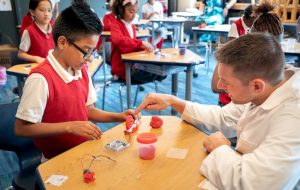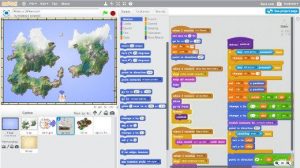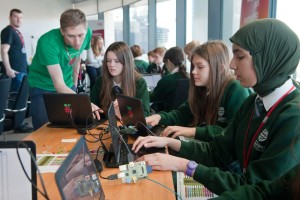Over many years, technology has evolved from telegraphs and Gutenburg’s printing press, to highly advanced mobile phones that can send and receive data in seconds and 3-dimensional printing. These technologies and many others have changed our culture in tremendous ways.
With the path of technology-integrated life comes technology-integrated learning. Many teachers have only been skimming the surface of all the technological capabilities made available to them and their students.
The technologies listed below are great for the students who are kinesthetic and visual learners! They are listed by grade level or you can click the category below that best represents your students!
1. STEM Activities best for K-3:
Early Engineering learning
Grab some Legos, sculpture clay, gumdrops and toothpicks, pasta and glue, or whatever you have to spare in your classroom and get building! Your students will love the idea of getting to make (and possibly eat!) their own creations while learning the basics of engineering, architectural design, and science!

Picture by Victoria Wendish via unsplash.com
Make it a competition and see which group of students can build the tallest structure, the sturdiest structure, or the most eye-pleasing design!
Another Outlet to be electrifying in STEM
These types of projects will light up (pun intended) your students’ faces when they get to play with molding dough as well as learn about electricity and how currents flow! This relatively cheap kit comes with all the things you need, including buzzers, colored LED’s, jumper wires, switches, and much more! This is also great for honing the students’ wild imagination with multiple easy-to-follow projects as examples to get you started!

Picture via squishycircuits.com
Become a Math Wiz
From the description “Timez Attack is an educational game that helps children learn and memorise their multiplication tables. It’s a cartoony third-person 3D adventure game that calls on students to guide its green bug/dinosaur of a hero or heroine through a dangerous fantasy world. Along the way they’ll need to quickly solve multiplication puzzles of increasing difficulty in order to keep going. Everything from unlocking doors to boss fights is powered by mastering multiplication.”
2. STEM Technologies best for 4-6:
Easy Coding and Designing Resources
Scratch is a kid-friendly website to get started in the realm of coding! It is also teacher friendly in the fact that it is free! The possibilities are endless with the projects your students can design with this drag-and-drop programming interface: from video games, animations, music, math problem-solvers, and much more!

Screenshot by Wilfried Elmenreich via opensource.com
- 3-D Printing and Computer-aided Design Software
While having a 3-D printer in your classroom would be cool, knowing the workings and designing the 3-D printed objects would be even cooler! Integrating these things can help inspire your upcoming students to consider the roles and high-income careers of architectural design or mechanical or civil engineering! Want to take it a step further? Make it a strategic and gear-turning competition and have your students gather in groups to design the most useful and well designed object, with the most voted being created!
3. STEM Technologies best for 7-12:
Desmos has a multitude of capabilities including its own graphing calculator, matrix calculator, and a geometry tool. Desmos also has 7 different math-based games to choose from, dealing with subjects like lines, points, and parabolas!
Internet of Things Learning
No, unfortunately it’s not an actual pie…Raspberry Pi is a palm-sized micro-computer that has various capabilities such as Bluetooth connectivity and wireless LAN. It can do most of what a regular computer can do and can be used for any subject you’re teaching! The best part is that any programming language which will compile for ARMv6 can be used with the Raspberry Pi.
The older students will go crazy over these small yet powerful computers that can perform tasks such as browsing the internet, play HD video, and booting into linux on a SD card. Not into coding and just want learning experiences from it? No problem! Raspberry Pi offers many tutorials and walkthroughs to follow found here!

Picture by Max Alexander via amsat-uk.org
Arduino is very similar to Raspberry Pi in the fact that it is a micro-computer. “Arduino is an open-source electronics platform based on easy-to-use hardware and software. It’s intended for anyone making interactive projects. Arduino senses the environment by receiving inputs from many sensors, and affects its surroundings by controlling lights, motors, and other actuators. You can tell your Arduino what to do by writing code in the Arduino programming language and using the Arduino development environment.”
Now go on and let your students’ imaginations SOAR with all of these amazing STEM projects that you can integrate in your classroom to set your students on the right path in STEM for the future!
Written by: Hope Deckard
